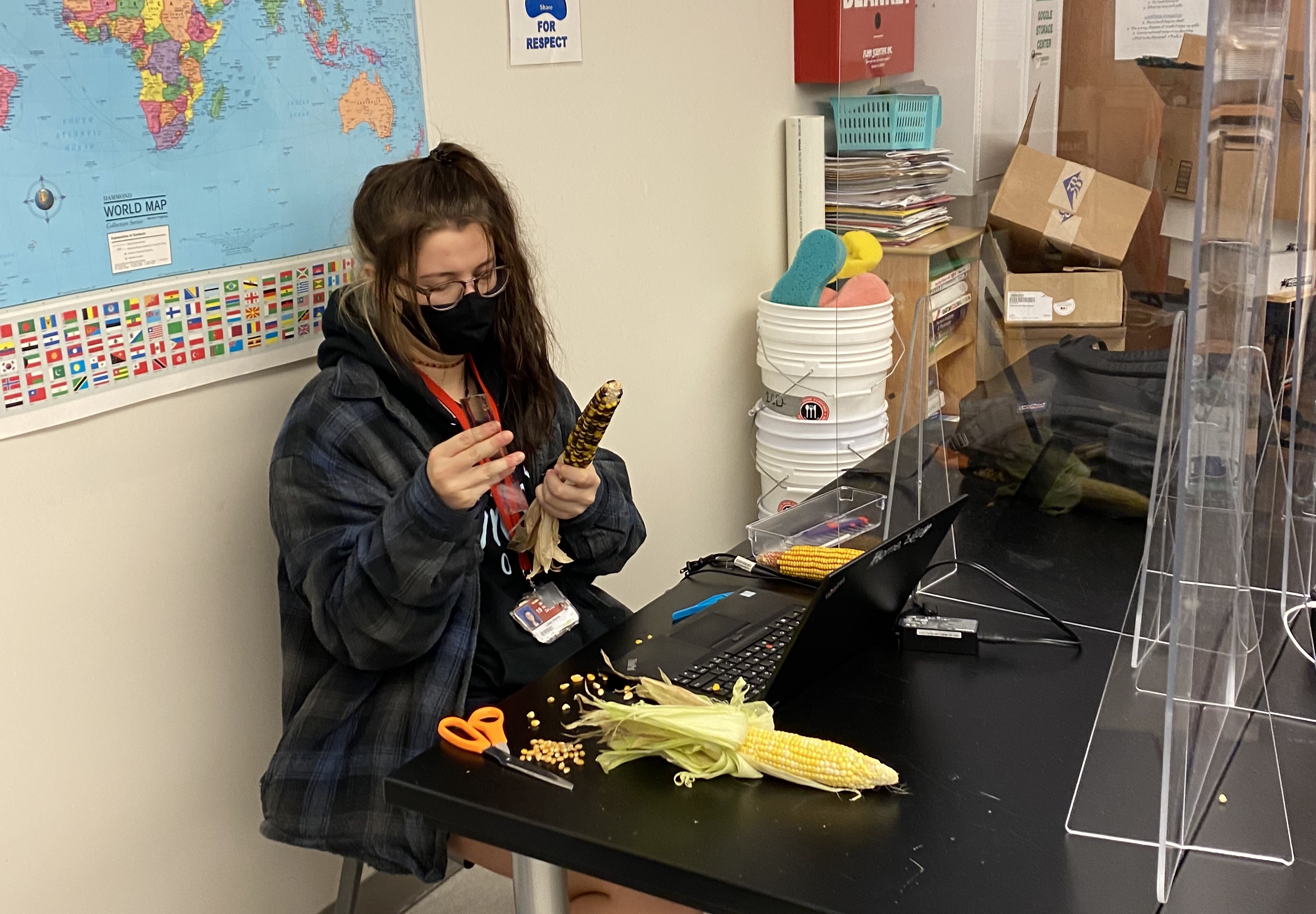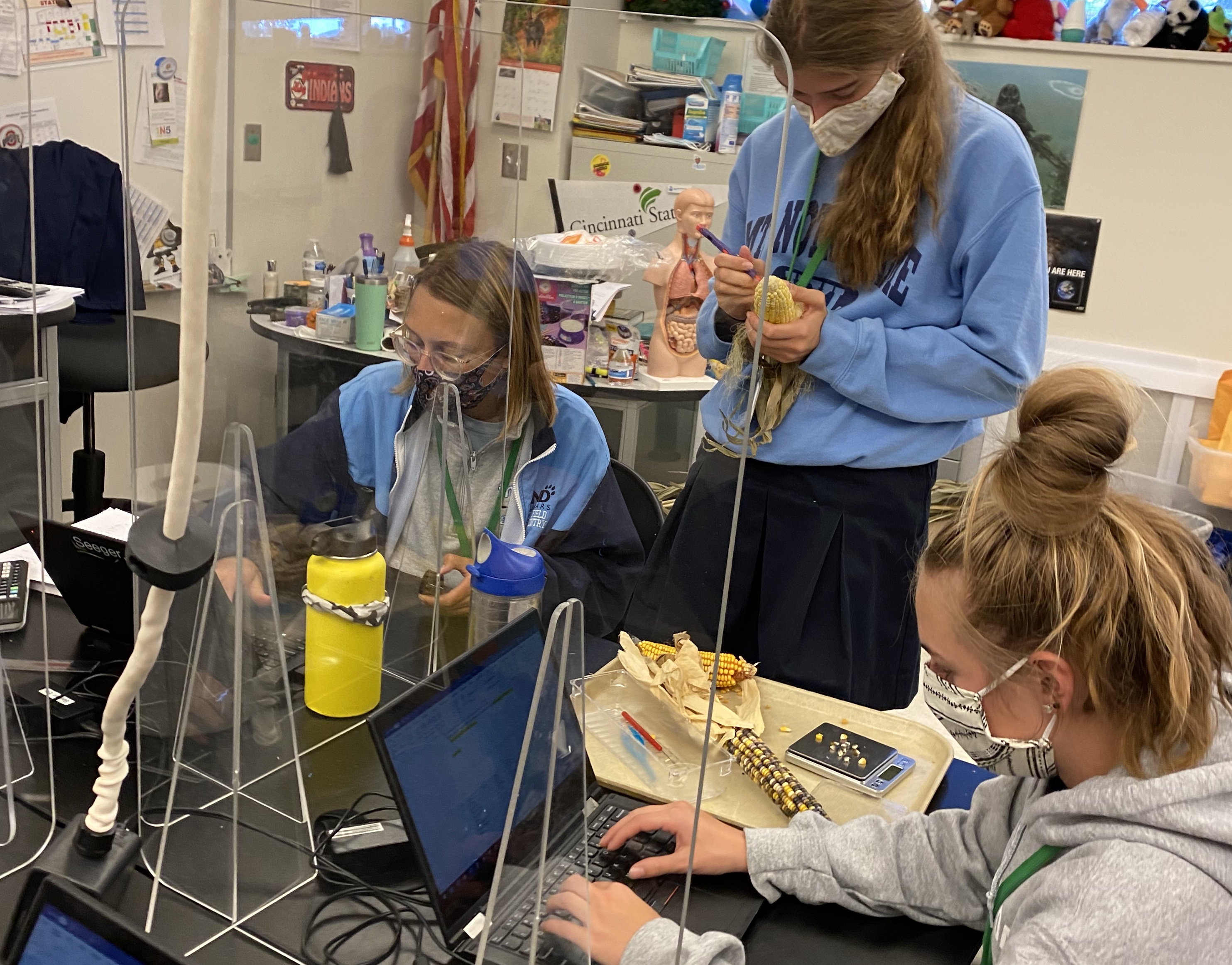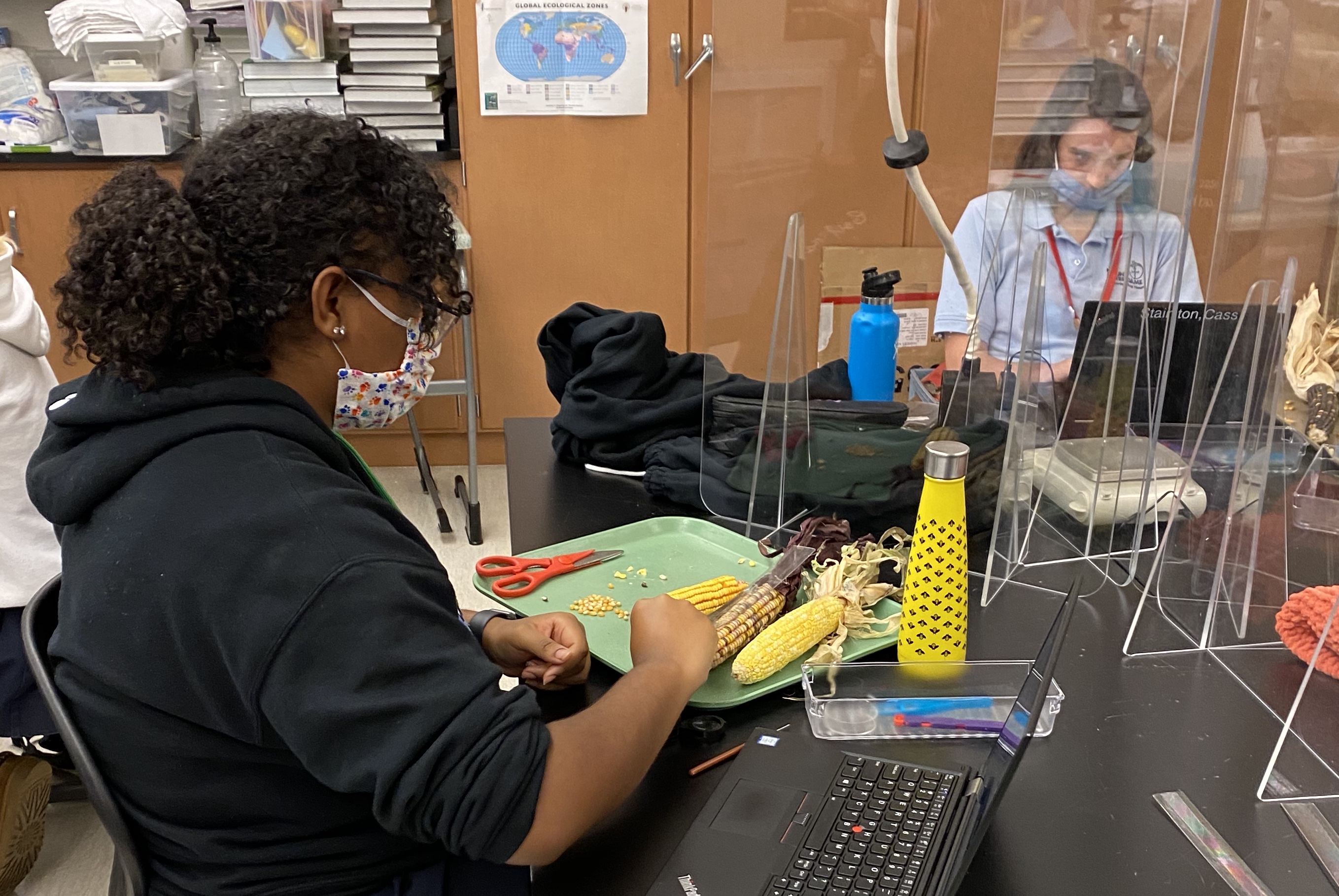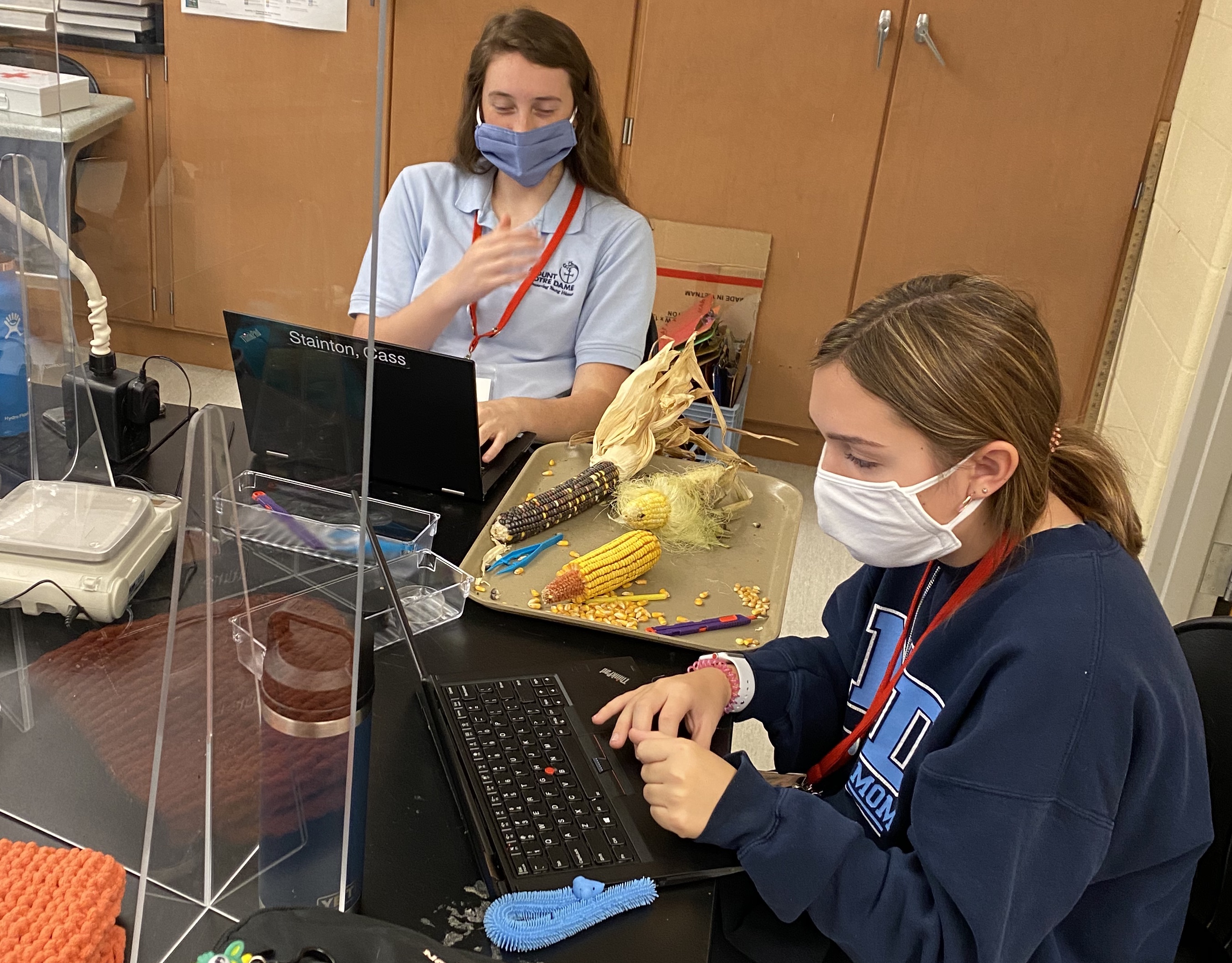Mary Beth Rieth of Mount Notre Dame High School shares about what she gained from participating in the summer Feed the World workshop.

I used the Feed the World Explore an Ear of Corn and Corn Dissection lab activities and modifications of those activities in my three Environmental Science classes for juniors and seniors to create a two-block lab to expose the students to the world of corn. The concepts presented will also be used in the second semester.

In January we will explore soil health and erosion. This will lead us into planting and what is needed to be successful with crops and any plant in our yards. So we will do nutrient testing, pH, and soil texture testing to determine best soil types for different plants. We will also grow “glass” corn from seeds in see-through containers to watch the progression until the plants are large enough to go home and be planted.
The students thoroughly enjoyed the lab activity. They were surprised as they did a little research and learned what products (besides the obvious) had a relationship to corn. They were ‘amaized’ (yes—a great pun we used a lot!) with the number of products they used that had corn somewhere in them.

The “a-ha” moments were based on their discussions about their research—the realization that corn is truly versatile, and without it, not only would people starve but be without so many products they love. They also really enjoyed the task of examining an ear of corn: counting the kernels, finding the patterns, observing that the seed coat was so hard on the dent corn and how the sweet corn kernels, being fresh, were much harder to manipulate and weigh. They didn’t realize what a tamale was made from and why the corn was “hairy”.
COVID times created a few obstacles. They had to “share” results as they can’t really share equipment, and we had students learning remotely that I had to send corn home to. Those at home did not get to explore the stalks except through their lab partners’ results on ZOOM. They realized how the climate of Ohio creates a great platform for corn growth but the weather, especially rain and cold, can devastate a crop. They were exposed to the Farmer’s Almanac, the concept of the Corn Belt and sayings such as “Knee High by the 4th of July”.
I feel the class activities were a great addition to my curriculum. The concepts presented are truly relevant to the state standards, and the reality of corn in so many aspects of student’s lives is a great fit. My objectives also include real world applications. These activities help me design a lab that I can reference and build on throughout the year. Those are key to critical thinking and tying together concepts.
As a teacher, the summer workshop encouraged me to think outside the box and think big on lab tie-ins. I am always looking for new ideas to incorporate and share with my science department. Many of these activities tie into other classes beside Environmental Science. I loved the corn DNA lab—corn is much cheaper than strawberries and the results were just as good! I love that I can pick up the activity book and can modify the activities to fit my class. Most of the equipment and materials needed are easily obtained and not too costly.
The workshop gave me better insight into how easy it would be to incorporate agriculture into a suburban classroom, and my students really liked the activities. As I continue to tie this into soil health, growing seasons, and food production for second semester, the things they learned first semester will make their understanding more concrete.
